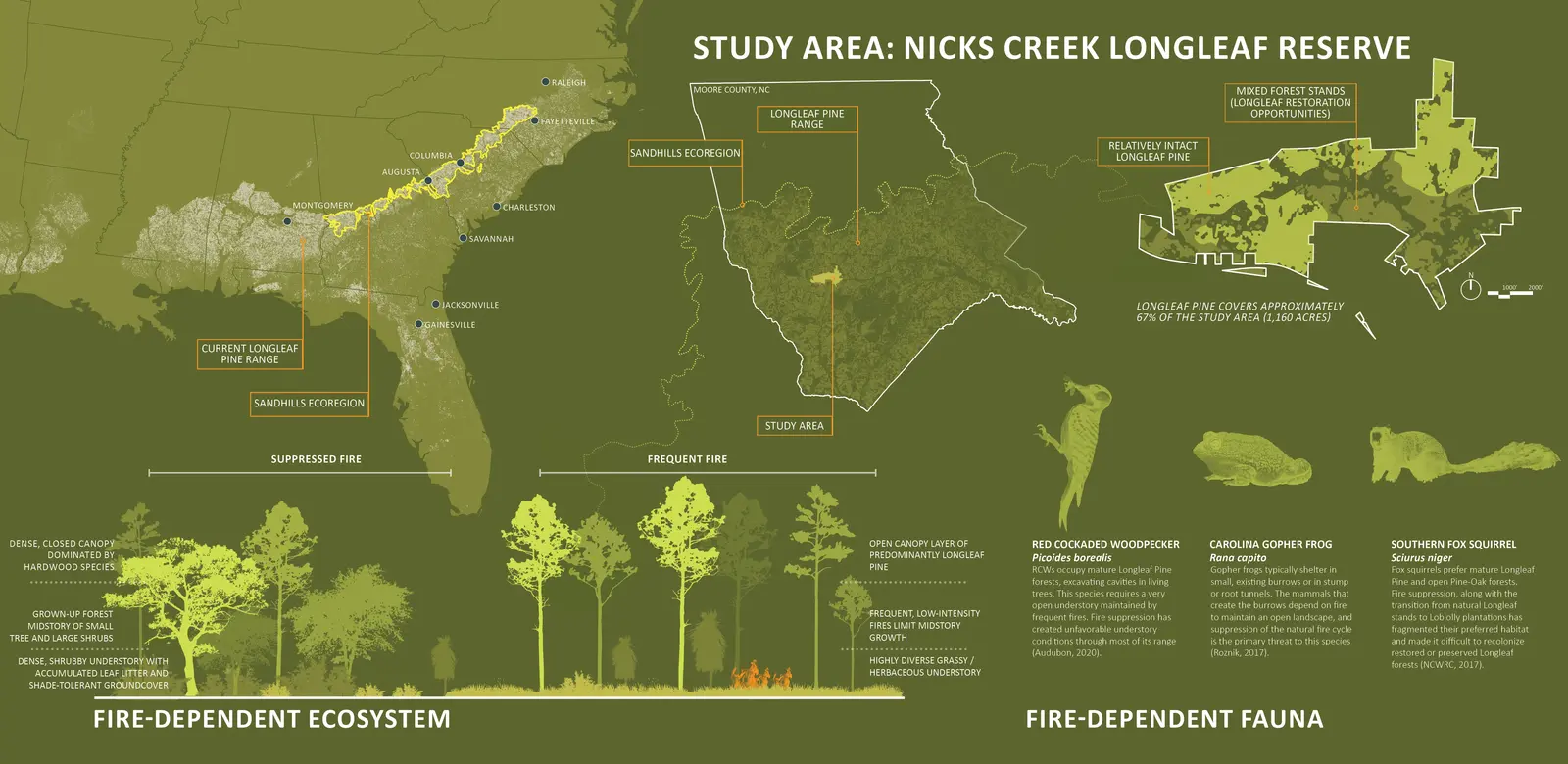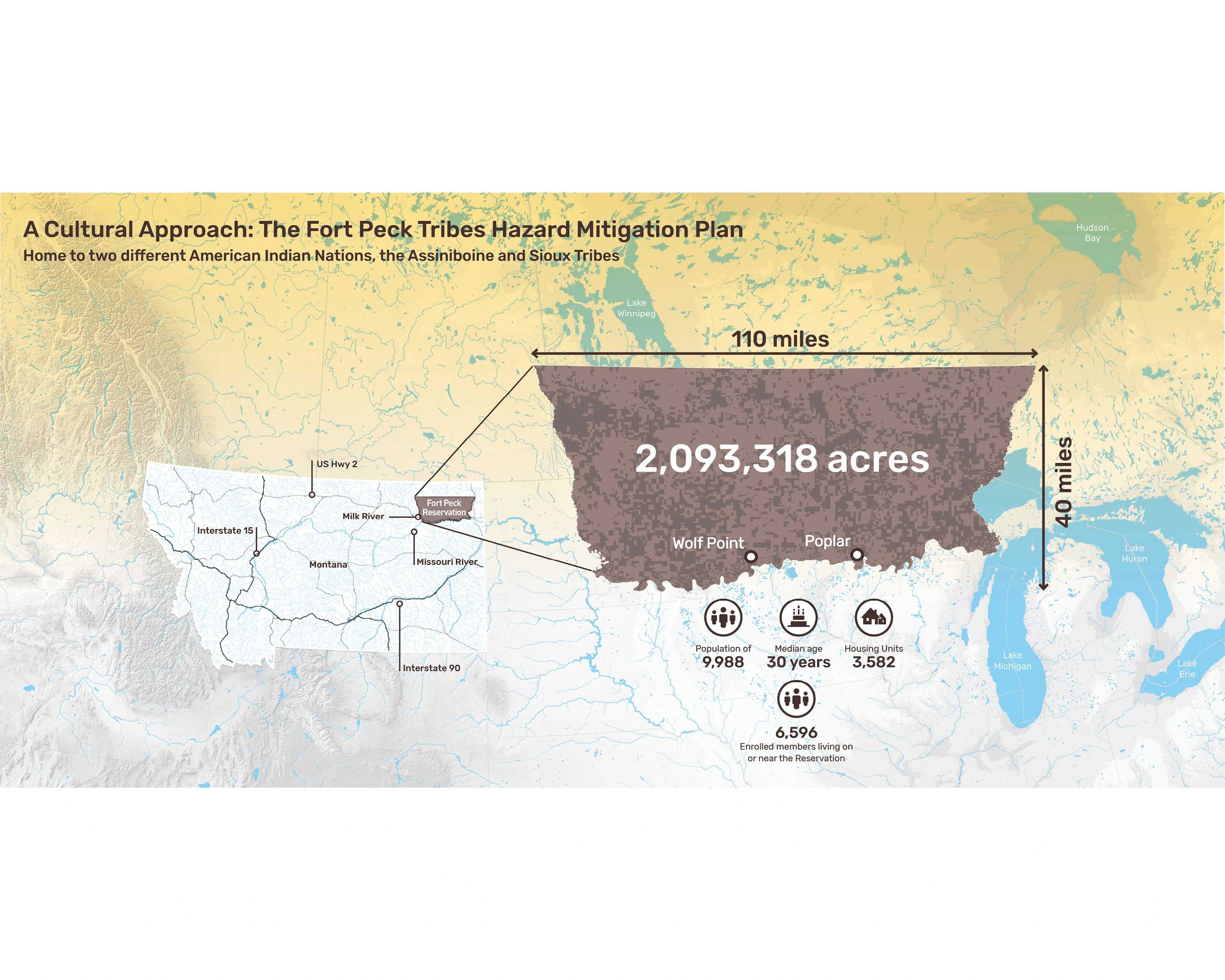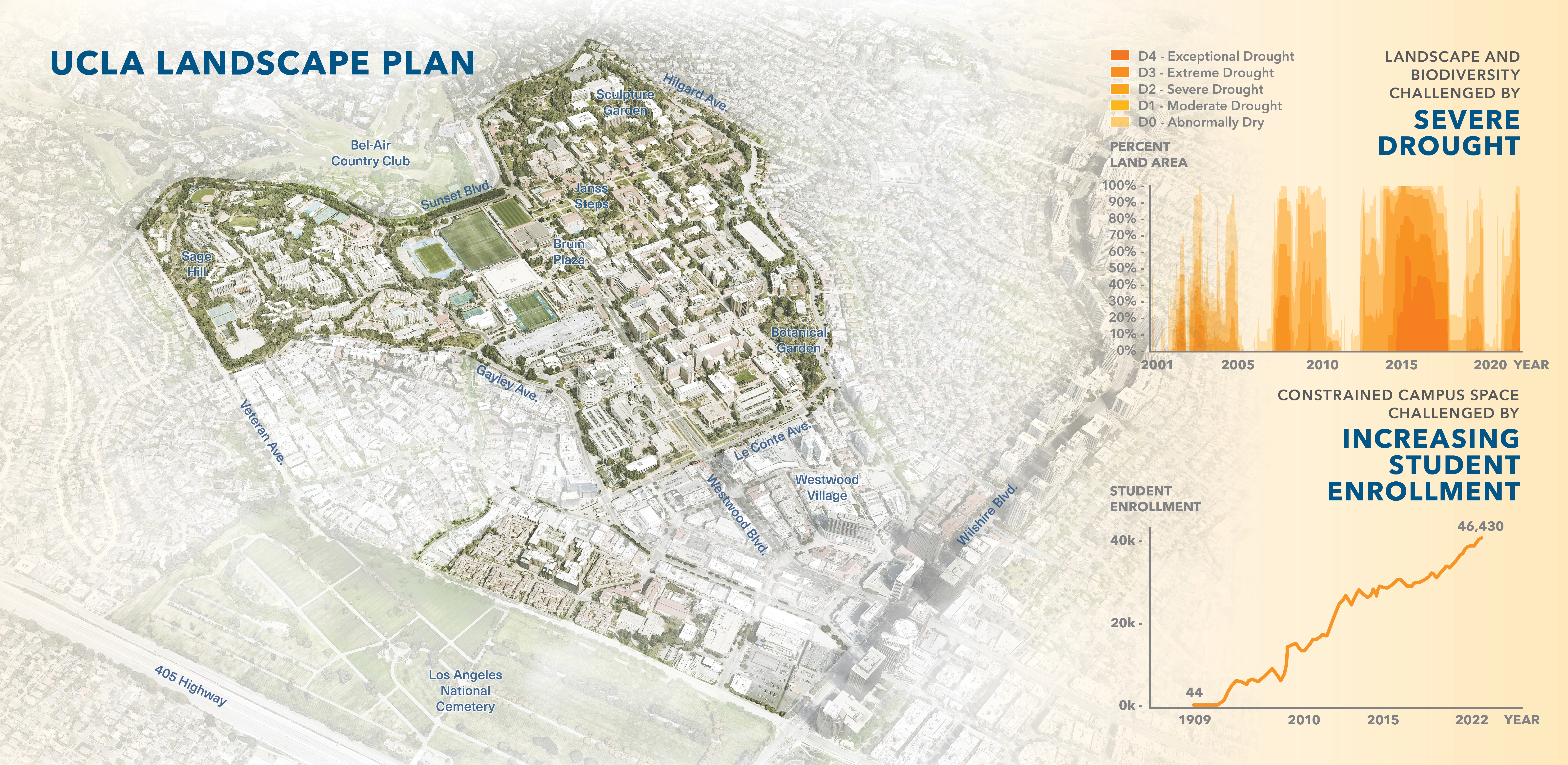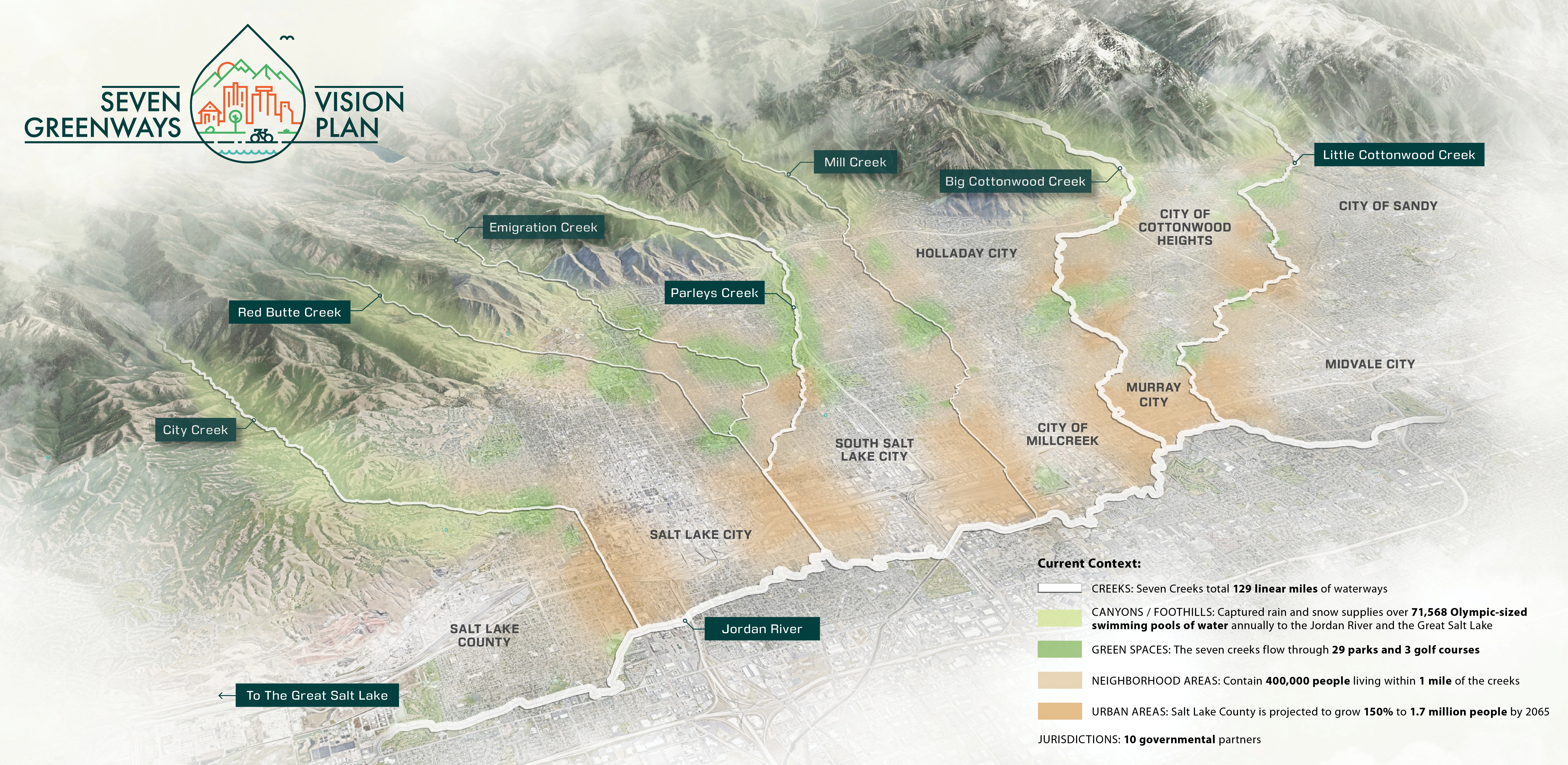Nicks Creek Longleaf Reserve Conservation & Management Plan
This mission-driven Conservation and Management Plan for a critical, endangered ecosystem is thoroughly researched, beautifully drawn, and well-organized. It brilliantly aligns approaches to conservation planning with management and sustainable stewardship best practices. The analysis spans spatial and temporal socio-economic scales, exhibiting the importance of environmental conservation to sensitively protect, restore, and encourage public access to high-value natural systems and features.
The conservation plan integrates social and educational aspects, which are important to consider to be successful. It is refreshing to see planning in a process-driven, dynamic management and monitoring framework for the conservation of land, habitats, and wilderness. The conservation planning is at an exceptional level.
Awards Jury
-
This project analyzed and created a conservation master plan for the restoration, adaptive management, and use of a 1600-acre patch of Longleaf Pine forest in the Sandhills ecoregion. The Sandhills are a physiographic region in the southeastern U.S. that support unique species and ecological communities, many of which are threatened or endangered. Longleaf Pine ecosystems are rated as the third most endangered ecosystem in the Southeast. The project site contains three (of four) ecological communities identified as regional conservation targets: Longleaf Pine Mosaic, Streamhead Pocosin/Seep, and Blackwater Stream. The resulting plan and programmatic recommendations are guiding the management of this rare and important ecosystem remnant.
-
The outcomes of this project informed the fee-simple gift of the property from a private ownership group to a land trust, and aligned new conservation programs with the land trust's mission, values, and goals. The master plan continues to shape decision-making for the site’s restoration, programming, and management, including specialized recommendations for high-priority natural habitats, endangered and protected species, and vulnerable watersheds. The project team secured grant funding; designed research methodologies; gathered, synthesized, and communicated data across disciplines and stakeholders; and crafted planning scenarios that contribute to ecological and community health. Targeted areas of analysis included habitat quality and uniqueness, ecosystem services, and anthropogenic population trends and development patterns such as transportation, infrastructure, and recreation. In total, the processes and products generated through this project had a demonstrable effect on the conservation of this large and rare Longleaf Pine forest remnant. High Priority Habitats: Regional conservation organizations have identified as conservation targets one species and four ecological communities that account for 95% of the region’s biodiversity. Longleaf Pine ecosystems are rated as the third most endangered ecosystem in the Southeast and are classified as a NC Wildlife Resources Commission conservation priority because “so few examples remain, protecting and expanding remaining examples is crucial. [...] Because these systems are likely to withstand the stresses of changing climate well, restoring more of them in the near future would produce more resilient natural landscapes.” Regional Ecosystems: Longleaf Pine (Pinus palustris) occurs only in the southeastern U.S. and was once the most abundant plant community in the Coastal Plain, but the range has been significantly reduced due to encroaching development, habitat fragmentation, and ecosystem degradation from fire suppression. Longleaf is especially prevalent in the Sandhills ecoregion. Longleaf covers nearly 67% of the project site’s acreage. In fire-suppressed forests, fast-growing shrubs and trees out-compete Longleaf. Changes in plant composition also affects vertebrate and invertebrate species that rely on the open landscape of the Longleaf Pine ecosystem. NC Natural Heritage Program Natural Area - Exceptional Ranking: The project site resides within a Registered Natural Area designated by the NC Natural Heritage Program with a top ranking of ‘Exceptional’. Of the 2,500 Natural Areas in North Carolina, only 17% achieve this highest rating. Only one-third of North Carolina’s exceptionally ranked natural areas are accessible to the public. This project prioritized public access to provide a unique opportunity for the general public to experience and learn about the stewardship of these important natural resources. Programmatic Development: This project’s robust analyses created opportunities for innovative and regenerative Longleaf programs and management practices. The new reserve is a regional destination for forest education and research. Specific programs include prescribed burn training and certification programs, forestry demonstration sites, sustainable pine straw raking, utility easement management, recreation and public use areas, curriculum alignment with nearby K-12 schools, summer camps/after school programs, site interpretation, and research and monitoring partnerships.
-
- Andy Fox, FASLA, PLA - Principal Investigator / Project Director
- Madalyn Baldwin, Associate ASLA - Co-Investigator / Project Manager / Assistant Research Professor
- Travis Klondike, PLA, ASLA - Assistant Research Professor
- Katarina King - Graduate Research Assistant
- Evie Dentinger - Graduate Research Assistant
- Katie Pace Quattlebaum - CEO & Executive Director, Southern Conservation Trust
- Jesse Woodsmith - Director of Conservation & Stewardship, Southern Conservation Trust
- Melvin Ezzell, NCRF - Pineforest Management, LLC
- Julie Moore - U.S. Fish & Wildlife (retired)
- Jeff Marcus - The Nature Conservancy
- Scott Pohlman - North Carolina Natural Heritage Program
-
- Longleaf Pine (Pinus palustris)
- Wiregrass (Aristida stricta)
- Bog Oatgrass (Danthonia epilis)
- Hidden-flowered Witchgrass (Dichanthelium cryptanthum)
- Pine Barrens Boneset (Eupatorium resinosum)
- Sandhills Lily (Lilium pyrophilum)
- Chapman’s Yellow-eyed Grass (Xyris chapmanii)
- Harper’s Yellow-eyed Grass (Xyris scabrifolia)
- Chapman’s Redtop (Tridens chapmanii)
- Sweet Pepperbush (Clethra alnifolia)
- Turkey Oak (Quercus laevis)

.webp?language=en-US)






















